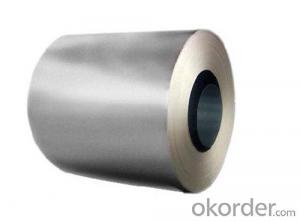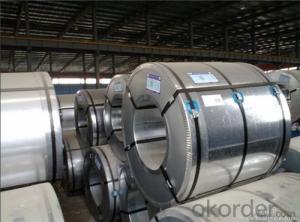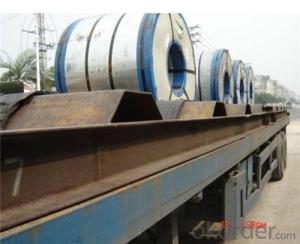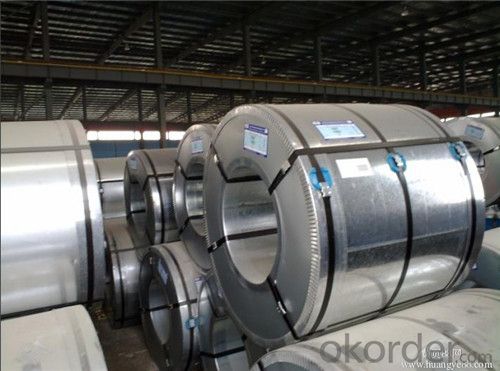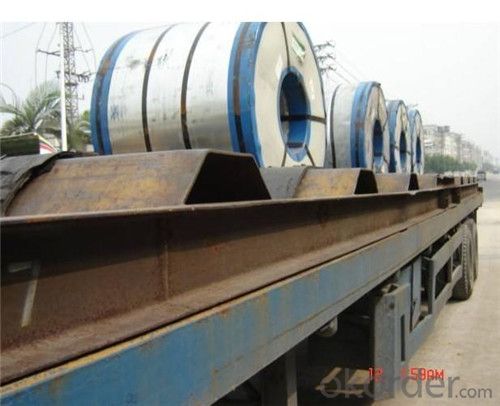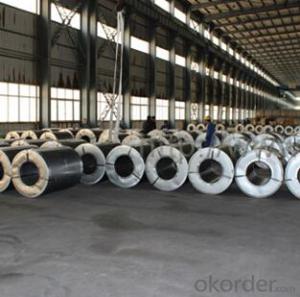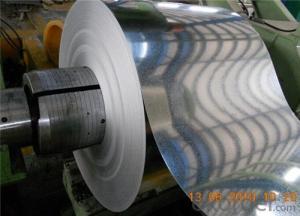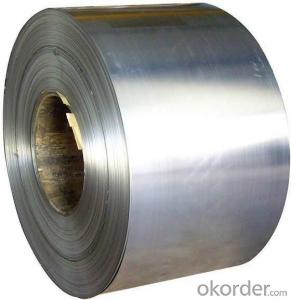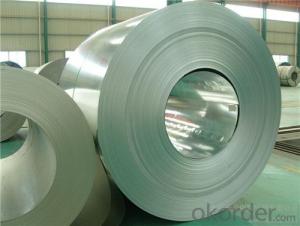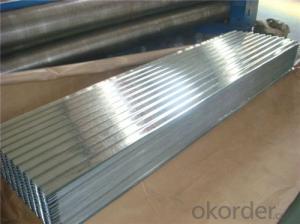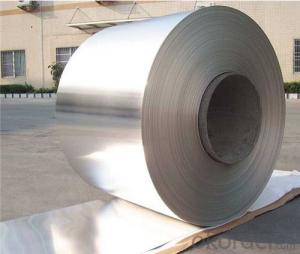Cold Rolled Galvanized Steel Coil for Building
- Loading Port:
- Shanghai
- Payment Terms:
- TT OR LC
- Min Order Qty:
- 36 m.t.
- Supply Capability:
- 30000 m.t./month
OKorder Service Pledge
Quality Product, Order Online Tracking, Timely Delivery
OKorder Financial Service
Credit Rating, Credit Services, Credit Purchasing
You Might Also Like
Product Description of Cold Rolled Galvanized Steel Coil/Plate
| Standard | ASTM,GB,JIS |
| Grade | DX51D+Z,SGCC |
| Thickness | 0.18-1.5MM |
| Width | 914,1000,1219,1250MM |
| Coil weight | 3-6mts |
| Top paint | 20MIL |
| Back paint | 7MIL |
| Surface treatment | color coated/galvanized/galvalume |
| Delivery time | 7-20 working days |
| Packing : | waterproof paper, galvanized steel covered and steel strip packed |
| USeage | widely used in construction,home,appliance,decoration,wear resistant steel,etc |
FAQ
Payment
30% deposit, 70% by T/T against B/L copy; or by L/C at sight
Guarantee against colour fading.
These products can be customized according to your requirement, including zinc coating,
printing color, roll width, etc.
1. Minimum Order Quantity?
MOQ is 25 tons, your quantity is ok, sample is available.
2. What kind of terms of payment?
T/T, L/C,are available.
- Q: What are the industries that consume the most steel?
- Costuuction and auto are most likely the top two.
- Q: I am a beginner (never played before!) and I am going to try to teach myself since I think it is a lovely instrument. I am fourteen-years-old so I am not 'adult-size', haha. Anyway, what is difference between nylon strings and steel strings?Thanks :)
- Small guitars easier to find in classical range. I assume their must be small steel strings but not seen them.
- Q: What are the different coil leveling machine configurations used for steel coils?
- There are several different coil leveling machine configurations that are commonly used for steel coils. These configurations vary based on the specific requirements of the steel coils being processed. One common configuration is the four-high leveling machine. This machine consists of four leveling rolls arranged in a stack. The steel coil passes through these rolls, which apply pressure to flatten and level the material. The four-high configuration is often used for thicker and heavier steel coils, as it provides a higher level of pressure and control during the leveling process. Another configuration is the six-high leveling machine. This machine has six leveling rolls arranged in two stacks of three rolls each. The steel coil passes through the first stack, where the initial leveling is performed, and then through the second stack for further refinement. The six-high configuration is often used for thinner steel coils, as it allows for a more precise and gentle leveling process. In addition to these configurations, there are also combination leveling machines available. These machines combine leveling with other processes, such as slitting or shearing, to provide a more comprehensive solution for steel coil processing. Combination machines are often used in applications where multiple steps are required to achieve the desired final product. Overall, the choice of coil leveling machine configuration depends on factors such as the thickness and weight of the steel coil, as well as the desired level of precision and efficiency. Manufacturers and processors must carefully evaluate their specific needs and select the appropriate configuration to ensure optimal results in the steel coil leveling process.
- Q: What is the type of stainless steel used in knifes.
- There okorder / Stainless steel doesn't make the best knife blade. It doesn't sharpen as sharp or hold its edge as well. High carbon steel is better, but it rusts and discolors very easily so it's not as popular. A new thing (actually not new but popular these days) is to use a 'sandwich' of high carbon steel between two layers of stainless. So the actual edge is high carbon steel but the blade looks like stainless. I have some kitchen knives made this way (kind of expensive) and I love them. This same technique was used in Japanese katanas, swords used by samurai warriors.
- Q: what are the properties that can strengthen the steel to withstand earhquake?
- Earth quakes are due to the result of the earth underneath moving. The earth has so many layers of earths called plates placed one over the other for so many millions of years. When these plates move because of stress and strain on the crust of the earth then the structures built over them collapses. So it need not to be steel or concrete which can withstand these stress and strains. Actually strength is not going to help. In Japan originally they built buildings with wood and made them light so that when earth quake strikes the impact is very less. A building has to withstand the shocks by having a spring action and should be spreading out the stress away from the building and act as a shock absorber.
- Q: How are steel coils used in the production of heating and cooling systems?
- Steel coils are used in the production of heating and cooling systems as they serve as the primary component for heat transfer. These coils are typically made from high-quality steel and are designed to efficiently transfer heat between the system's refrigerant and the surrounding air. By passing the refrigerant through these coils, the heat is either absorbed or released, depending on whether the system is providing heating or cooling. This process enables the heating and cooling system to effectively regulate the temperature of a space, providing comfort and maintaining desired conditions.
- Q: So I'm looking for some decently priced black motorcycle boots that have steel toes (and any additional protection) and look good in jeans. Pretty simple. Any recommendations?
- (add boots in top right search) If your looking for a dedicated motorcycle boot they have videos (top of line look for the high $) what they don't tell you is the added road feedback threw the soles and the small wear toe hard shift pad gives you feed back on the shift lever next to bare footed!
- Q: What are the factors that determine the price of steel coils?
- The factors that determine the price of steel coils include the current demand and supply levels in the market, the cost of raw materials and energy, the production and labor costs, transportation and logistics expenses, market competition, government policies and regulations, as well as currency exchange rates.
- Q: How do you prevent damage to steel coils during transportation?
- To prevent damage during the transportation of steel coils, there are several measures that can be taken: 1. Tight and secure packaging: It is important to pack the steel coils tightly and securely to prevent any movement or shifting during transportation. This can be achieved by using appropriate packaging materials such as steel cradles, wooden dunnage, or steel straps to hold the coils in place. 2. Use cushioning materials: Adding cushioning materials like foam padding, cardboard, or bubble wrap between the coils can help absorb shocks and vibrations during transit. This additional layer of protection minimizes the risk of scratches, dents, or other damages caused by contact with other objects or surfaces. 3. Handle and load properly: It is crucial to use proper lifting equipment and techniques to avoid mishandling and dropping of the steel coils. Carefully lifting and loading the coils onto transportation vehicles using forklifts or cranes is recommended. Additionally, stacking the coils in a way that distributes weight evenly helps maintain stability. 4. Protect from weather: Steel coils are susceptible to corrosion, so it is essential to shield them from moisture and adverse weather conditions during transportation. Covering the coils with waterproof and weather-resistant tarps or shrink wrap prevents water or moisture from reaching the steel surfaces. 5. Regular inspections: Conducting regular inspections before, during, and after transportation is vital to identify any potential damage or issues. This allows for timely intervention to rectify any problems and prevent further damage. 6. Trained personnel: It is crucial to ensure that personnel involved in handling, loading, and transporting the steel coils are properly trained. They should be knowledgeable about the correct procedures and techniques to safely handle and transport the coils, reducing the risk of damage. By implementing these preventive measures, the likelihood of damage to steel coils during transportation can be significantly reduced, ensuring that the coils reach their destination in optimal condition.
- Q: I'm analysing horse stirrups and would like to know the disadvantages to stainless steel? - thanks
- For horse stirrups the main disadvantage to stainless steel is the manufacturing cost. Stainless steels tend to work harden, and are subject to their own peculiar forms of corrosion, but I see little implication to either of these factors when used as a stirrup iron or a safety latch. Stainless steel is also subject to self welding, or galling, this would be of no concern for the irons, but could result in the pivot of the safety latch freezing (I have never known anyone to ride with the safety latch closed, however).
Send your message to us
Cold Rolled Galvanized Steel Coil for Building
- Loading Port:
- Shanghai
- Payment Terms:
- TT OR LC
- Min Order Qty:
- 36 m.t.
- Supply Capability:
- 30000 m.t./month
OKorder Service Pledge
Quality Product, Order Online Tracking, Timely Delivery
OKorder Financial Service
Credit Rating, Credit Services, Credit Purchasing
Similar products
Hot products
Hot Searches
Related keywords
